1910s
Mystery Illustration 99
What fairly high-tech product--for 1911--would require such a vast factory?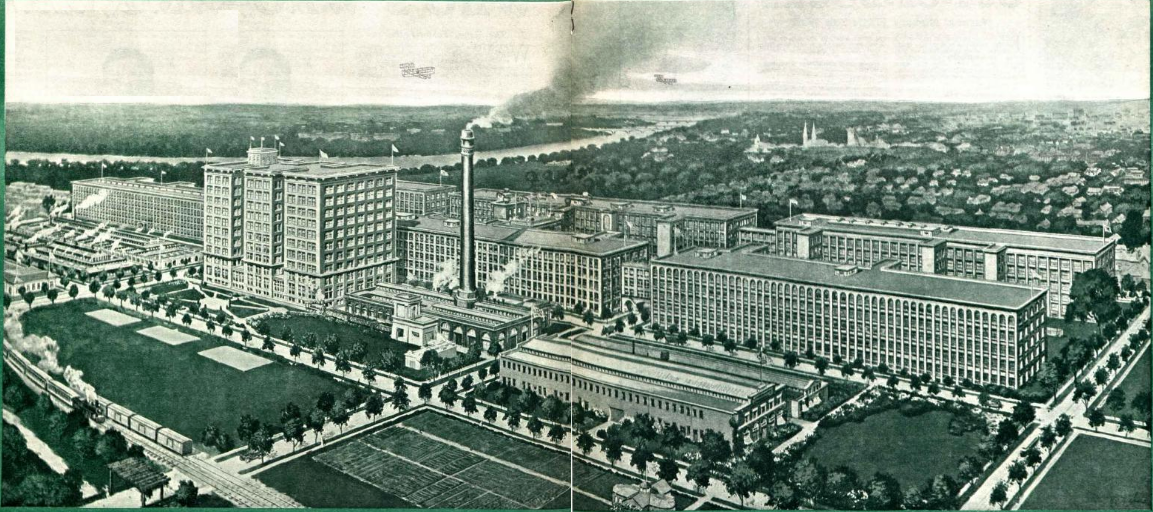
Answer after the jump.
More in extended >>
Posted By: Paul - Thu Apr 01, 2021 -
Comments (2)
Category: Architecture, Buildings and Other Structures, Technology, 1910s
Kruger and Ward
Posted By: Paul - Thu Mar 18, 2021 -
Comments (0)
Category: Human Marvels, 1910s
Dr. Abrams’s Theory of Human Energy
Read the doctor's thesis here.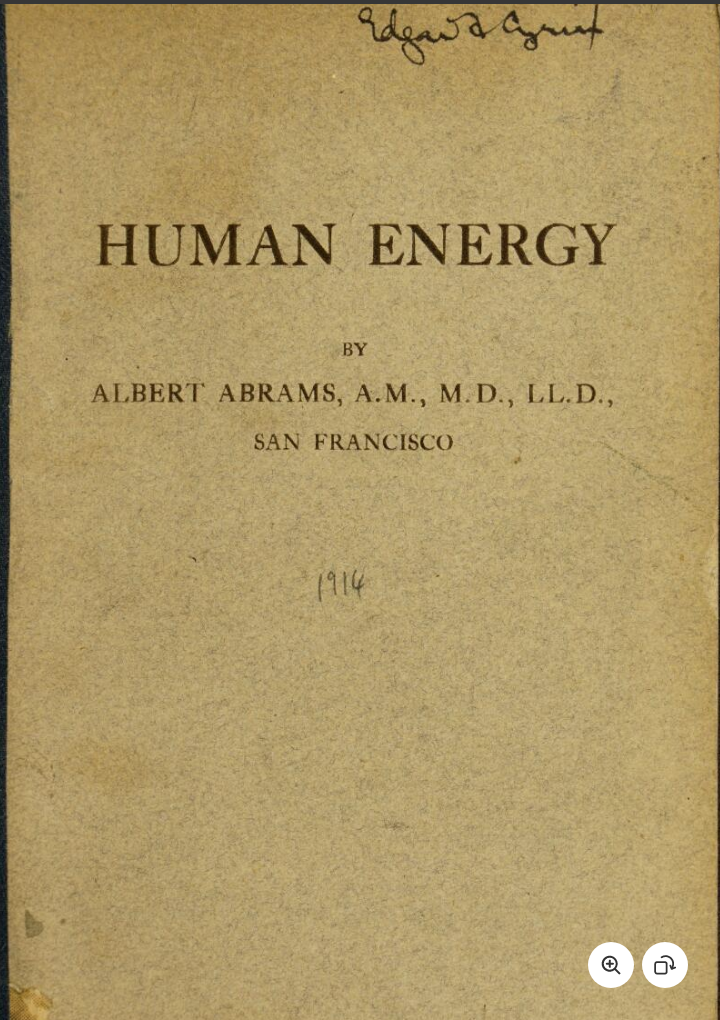
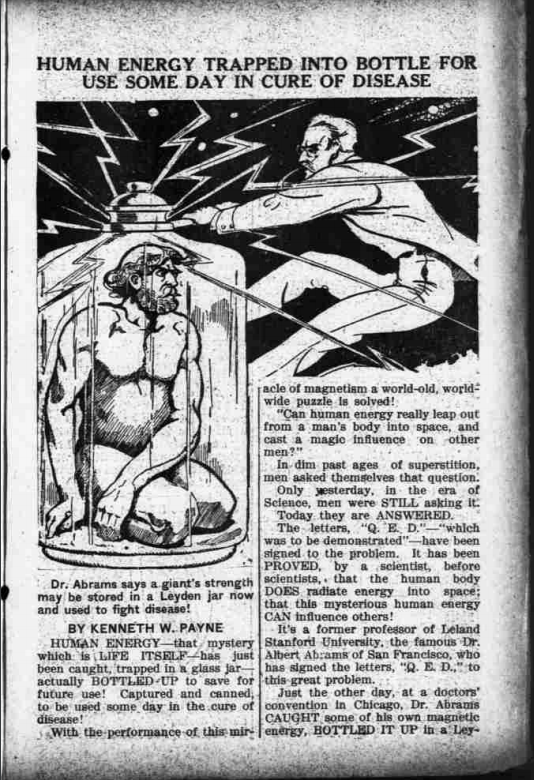
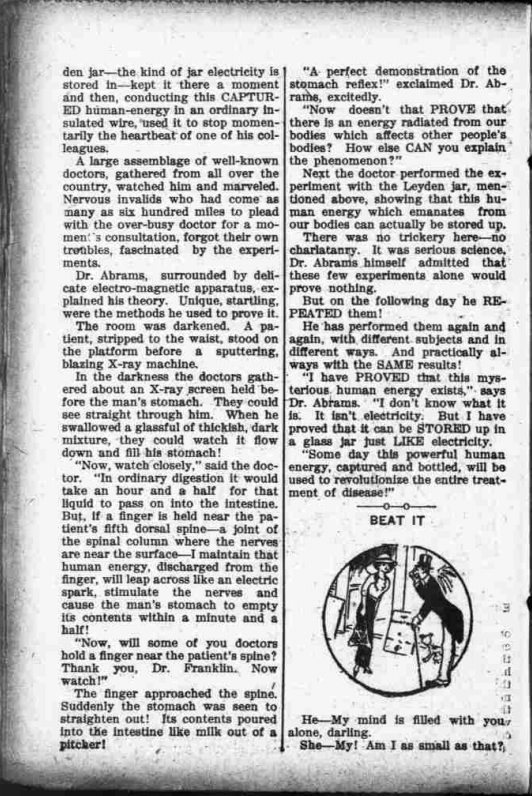
Posted By: Paul - Mon Mar 08, 2021 -
Comments (2)
Category: New Age, Patent Medicines, Nostrums and Snake Oil, 1910s
Baitinger’s Automatic Eater
I posted last week about a 1940's invention which envisioned putting restaurant diners on a conveyor belt so that they could be carried past food stations. Several readers commented that the Japanese have embraced the opposite concept, of putting the food on a conveyor belt so that it travels past the diners.I did some research and discovered that the origin of the idea of having food on a conveyor belt traces all the way back to 1919 when John Moses Baitinger of Minnesota applied for a patent on this concept, which he called his "Automatic Eater". His patent was granted in 1923. He had small wooden cars, laden with food and drinks, moving along tracks, pulled by a system of cables.


Karal Ann Marling discusses some of the history of Baitinger's invention in her book Blue Ribbon: A Social and Pictorial History of the Minnesota State Fair:
The ensemble was the invention of the Reverend J.M. Baitinger, an Evangelic churchman, who stationed himself out in front with a megaphone to ballyhoo a new era in state fair dining: "Haba! Haba! Haba! This is the place to be merry. Eat! Eat! Eat! All you want for 50 cents; for without a full stomach you cannot enjoy the fair. Haba! Haba! Haba!"
The Automatic Eater cost Baitinger more than one thousand dollars to build but, because of its novelty and the economies it permitted, the cafe more than paid for itself during a trial run conducted on the last few days of the 1920 fair. "Through the medium of the Automatic Eater," he stated the following summer, "I do away with all excess help and employ only one cook, a dish washer, and a woman to keep the train well stocked with food. I pay no attention to what my customers eat, how long they stay or how much food they consume." But there were healthy profits, which Baitinger turned over to a St. Paul hospital.
Baitinger's Eater was, in many ways, a perfect expression of the mentality of the automation-mad 1920s, obsessed with speed, technology, and efficiency. There were minor drawbacks to the system, however. Diners seated near the end of the line sometimes found that the only cargo left for the eating was boiled cabbage.

Posted By: Alex - Sun Feb 28, 2021 -
Comments (2)
Category: Food, Inventions, Patents, Restaurants, 1910s
Mary & Gretel
Motto: existence is short and capricious, leavened only by booze.
Posted By: Paul - Wed Dec 16, 2020 -
Comments (1)
Category: Animals, Games, Fantasy, Stop-motion Animation, 1910s, Alcohol
Mystery Gadget 90
What's this device do?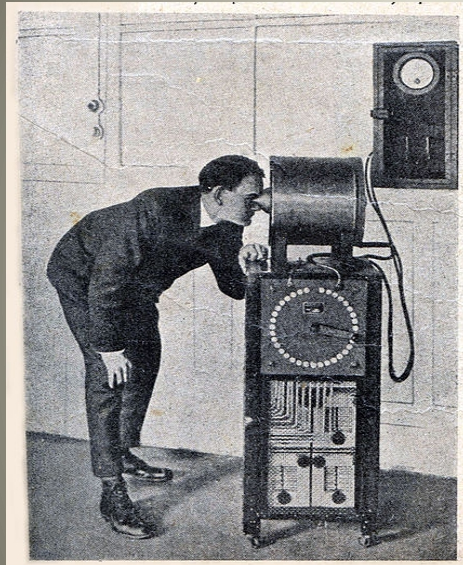
The answer is here.
Or after the jump.
More in extended >>
Posted By: Paul - Thu Dec 10, 2020 -
Comments (1)
Category: Inventions, Technology, 1910s
Dyr bul shchyl
The Russian artist Alexei Kruchenykh invented the Zaum language in 1913. He described it as "a language which does not have any definite meaning." From what I can gather, it was gibberish sounds strung together.Dyr bul shchyl, also written by Kruchenykh, was the first (but not last) poem written in Zaum.
ubeshshchur
skum
vy so bu
r l ez
You can hear Kruchenykh reading the poem aloud in the first clip. There's a more modern interpretation of it below.
Knowing Russian, or any other language, won't help you understand the poem. But according to Russian language expert Lucas Stratton, "critics have interpreted Dyr bul shchyl as an arrangement of sounds associated with a coming storm."
Posted By: Alex - Sun Nov 29, 2020 -
Comments (0)
Category: Languages, Poetry, 1910s, Cacophony, Dissonance, White Noise and Other Sonic Assaults
M. X. Mockus, Blasphemer
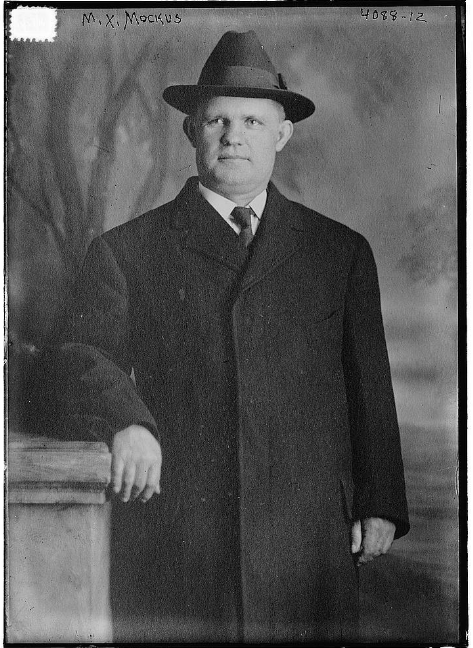
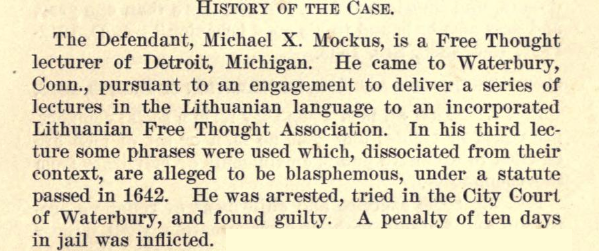
Read all about it here.
Photo source.
Posted By: Paul - Wed Nov 11, 2020 -
Comments (2)
Category: Law, Religion, 1910s
Wrinkle Mask
Adelaide Smith was granted a patent for this "wrinkle mask" in 1911. It has a certain Bride of Frankenstein look to it.
My invention dispenses with the usual work in massaging, employed for removing the wrinkles or blemishes from the face, and can be used at any time more particularly, however, at nights while the patient is sleeping.
Posted By: Alex - Sun Oct 18, 2020 -
Comments (3)
Category: Beauty, Ugliness and Other Aesthetic Issues, Inventions, Patents, 1910s
Follies of the Madmen #491
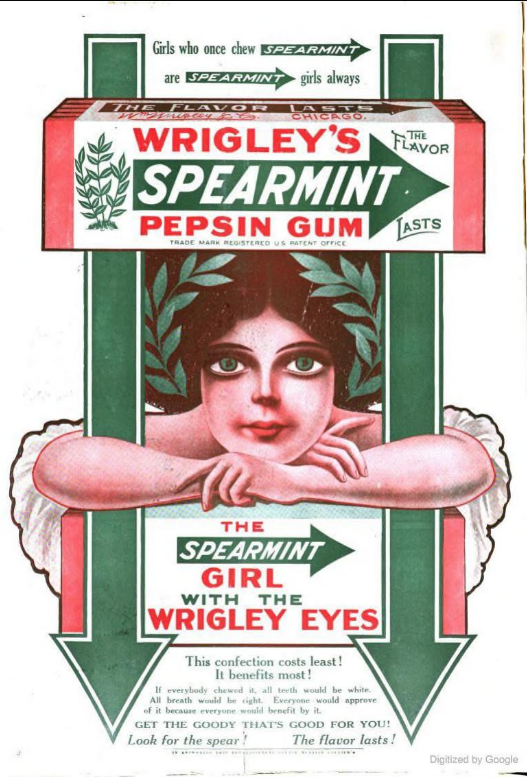
"Our gum will alter your irises!"
Source.
Posted By: Paul - Fri Oct 16, 2020 -
Comments (5)
Category: Body Modifications, Business, Advertising, Junk Food, 1910s, Eyes and Vision

| Who We Are |
|---|
| Alex Boese Alex is the creator and curator of the Museum of Hoaxes. He's also the author of various weird, non-fiction, science-themed books such as Elephants on Acid and Psychedelic Apes. Paul Di Filippo Paul has been paid to put weird ideas into fictional form for over thirty years, in his career as a noted science fiction writer. He has recently begun blogging on many curious topics with three fellow writers at The Inferior 4+1. Contact Us |




